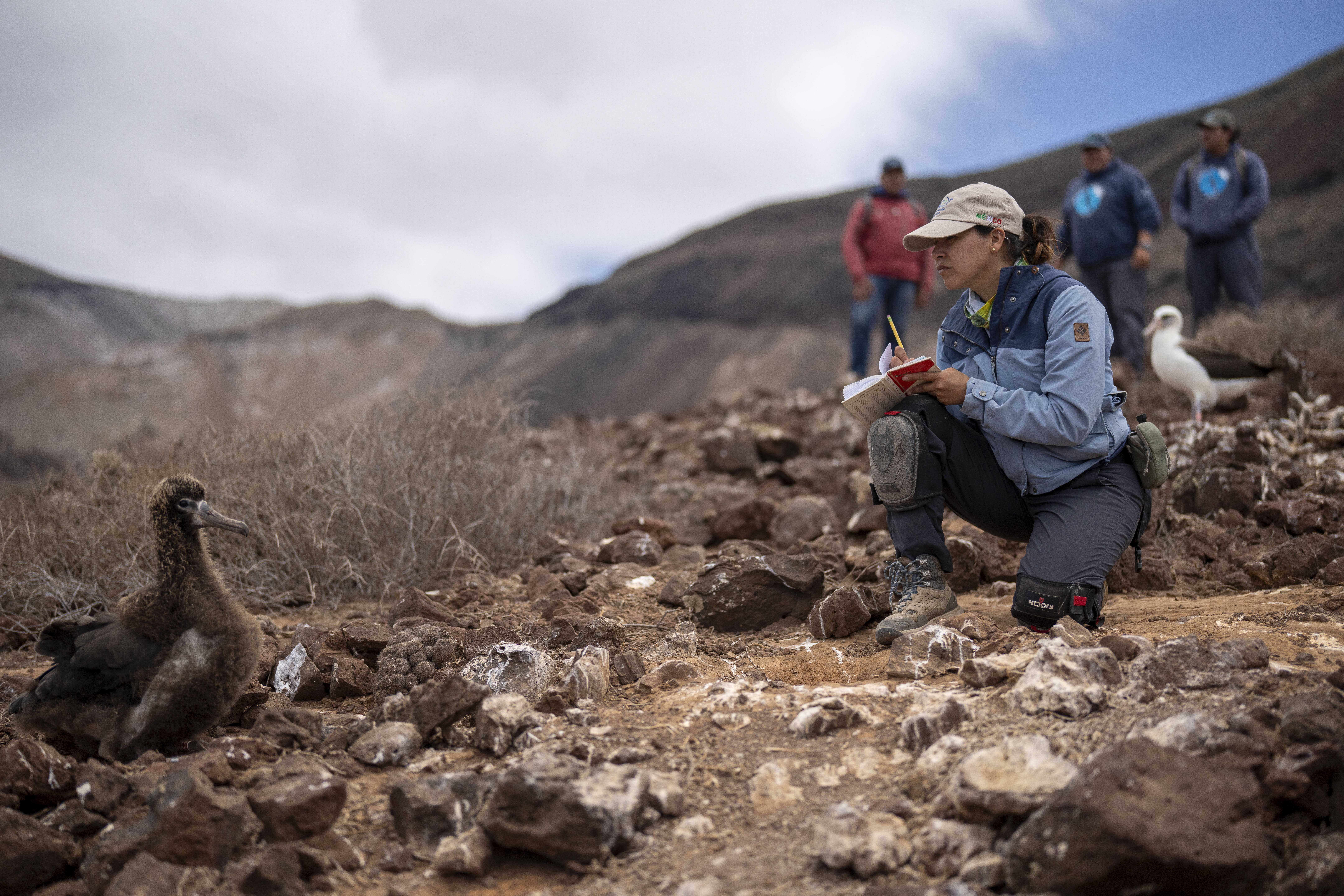 Recording a Laysan Albatross chick, UN World Restoration Flagship Comprehensive Island Restoration in Mexico, photograph by Todd Brown
Recording a Laysan Albatross chick, UN World Restoration Flagship Comprehensive Island Restoration in Mexico, photograph by Todd Brown
“The UN Environment Programme (UNEP) and the Food and Agriculture Organization of the UN (FAO) have named the first World Restoration Flagships for this year, tackling pollution, unsustainable exploitation and invasive species in three continents. These initiatives are restoring almost five million hectares of marine ecosystems – an area about the size of Costa Rica, which co-hosts with France the UN Ocean Conference.
The three new flagships comprise restoration initiatives in more than sixty of Mexico’s islands, the coral-rich Northern Mozambique Channel, and the Mar Menor in Spain, Europe’s first ecosystem with a legal personhood. Winning initiatives were announced at an event during the UN Ocean Conference in Nice, France, and are now eligible for UN support.
Recognized worldwide as vital hotspots for biodiversity, particularly for being home to one third of the world’s seabird species, the Mexican islands had long suffered the negative impacts of invasive species.
26 years ago, Mexico’s National Commission for Natural Protected Areas (CONANP) and the civil society organisation Grupo de Ecología y Conservación de Islas (GECI) launched an ambitious, comprehensive ecological restoration program, in collaboration with partners from government agencies, civil society, academia, and local communities.
Efforts include removing 60 populations of invasive species and restoring seabird colonies, as well as forest landscape restoration. Coupled with implementing biosecurity protocols, the comprehensive programme restores the island’s endemic richness and supports local island communities.”
“Across Mexico's precious islands, tangible restoration actions and results are breathing new life into vital ecosystems, directly bolstering rich insular and marine biodiversity of global relevance, saving species, and weaving firm threads into the livelihoods of local communities,” said Dr. Marina Robles García, Undersecretary of Biodiversity and Environmental Restoration, Secretariat of Environment and Natural Resources (SEMARNAT). “Building on this type of success, Mexico is forging ahead with a robust National Environmental Restoration Program, casting its islands as a shining flagship for the revitalization of our myriad ecosystems.
Thanks to restoration efforts, 85 per cent of formerly extirpated seabird colonies have returned to the islands, including species at risk of extinction. The initiative will complete the restoration of over 100,000 hectares by the end of the decade – equivalent to almost a million hectares of continental land in terms of biodiversity value — encompassing almost 100 islands, and protecting over 300 endemic species of mammals, birds, reptiles and birds.
An enduring relationship with local communities ensures their involvement in the initiative and their benefits: enhanced resilience facing extreme weather events, sustainable fisheries, and ecotourism.”
John Cooper, Emeritus Information Officer, Agreement on the Conservation of Albatrosses and Petrels, 16 July 2025

 English
English  Français
Français  Español
Español